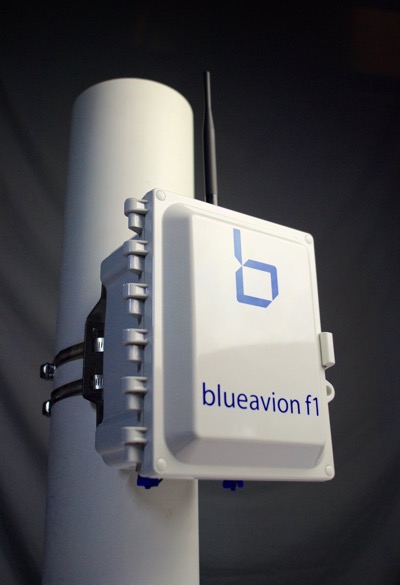 A product co-developed by a professor in Purdue Polytechnic’s School of Aviation and Transportation Technology and tested at the Purdue University airport has launched commercially.
A product co-developed by a professor in Purdue Polytechnic’s School of Aviation and Transportation Technology and tested at the Purdue University airport has launched commercially.
Blueavion f1, a sensor system that uses data collection technology to improve small airport operations, was developed by John Mott, associate professor of aviation technology, and Darcy Bullock, the Lyles Family Professor of Civil Engineering. The landings and takeoffs of aircraft, known as airport operations, are typically logged by staff in air traffic control towers, but airports that either don’t have towers or that are staffed fewer than 24 hours/day face challenges in collecting such data. Blueavion f1 is placed near runways to collect airport operation data automatically, sensing transponder signals in arriving and departing aircraft and logging data on a secure web portal.
“Many small airports rely on approximations for operations counts, but a more accurate method to collect this data could help when applying for FAA funding,” Mott said. “What we have developed is a way to utilize the transponder signals broadcast by most aircraft to compute the distances of those aircraft from our portable receiver and data collection device. These distance computations are used along with additional parameters such as aircraft altitude to determine whether an aircraft is taking off or landing at a particular airport. This is an improvement over the conventional method of acoustic counting technology, which typically captures only a portion of total operations.”
Bluemac Analytics, an Oregon-based company specializing in roadway and aviation data and analysis for transportation agencies and airport operators, licensed the Blueavion f1 system for commercialization.
See the full Purdue News article.
Additional information:
